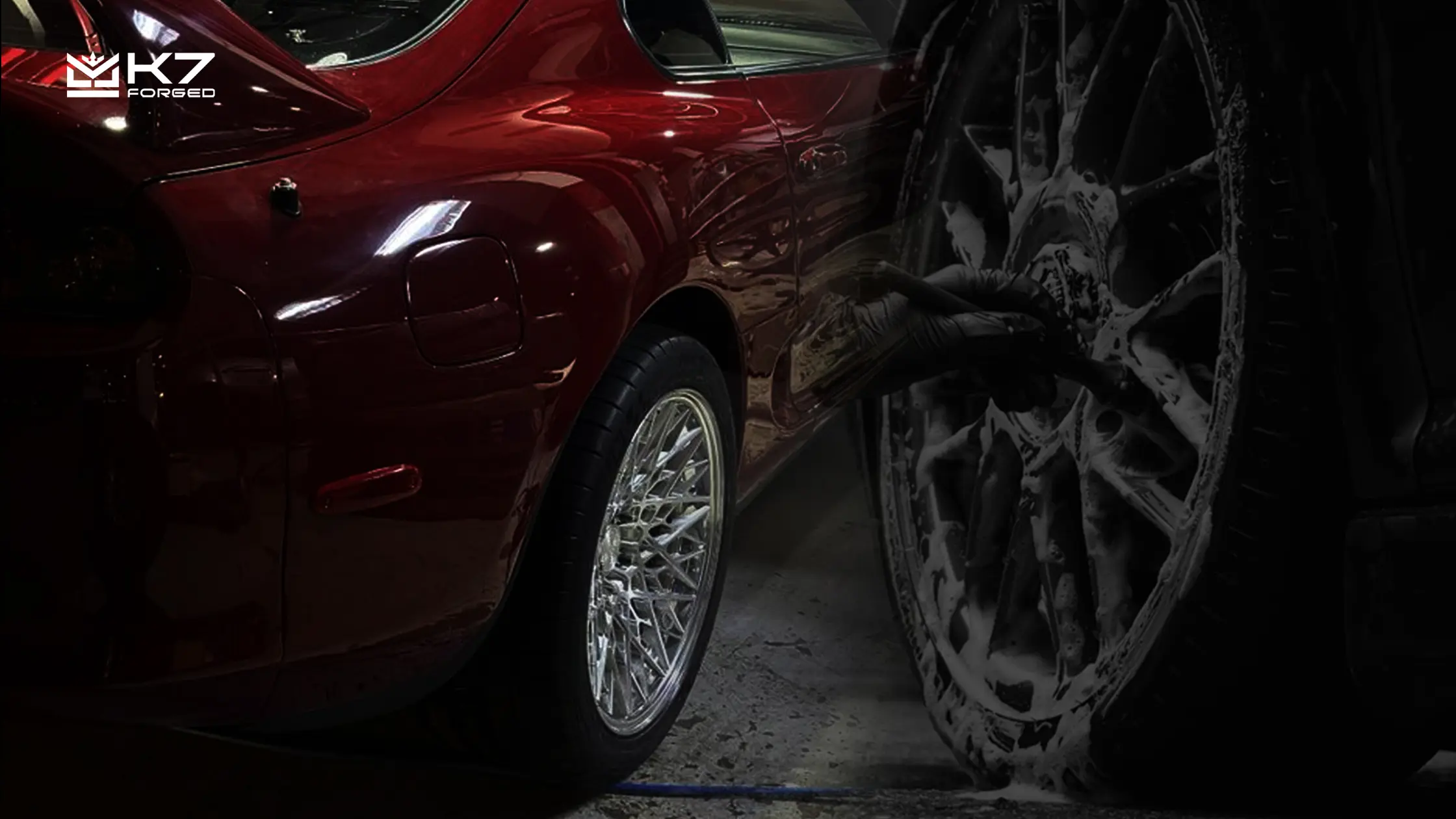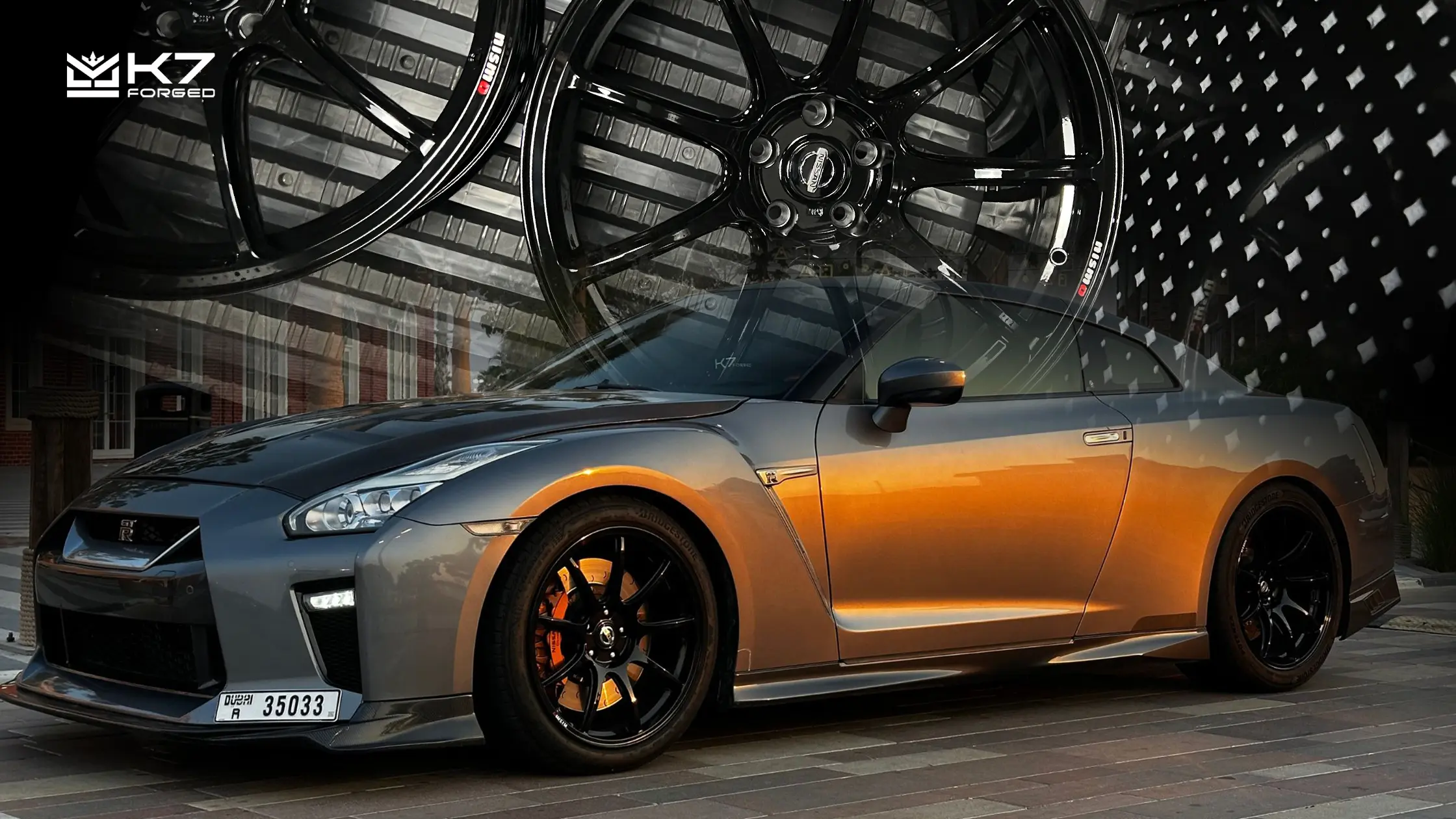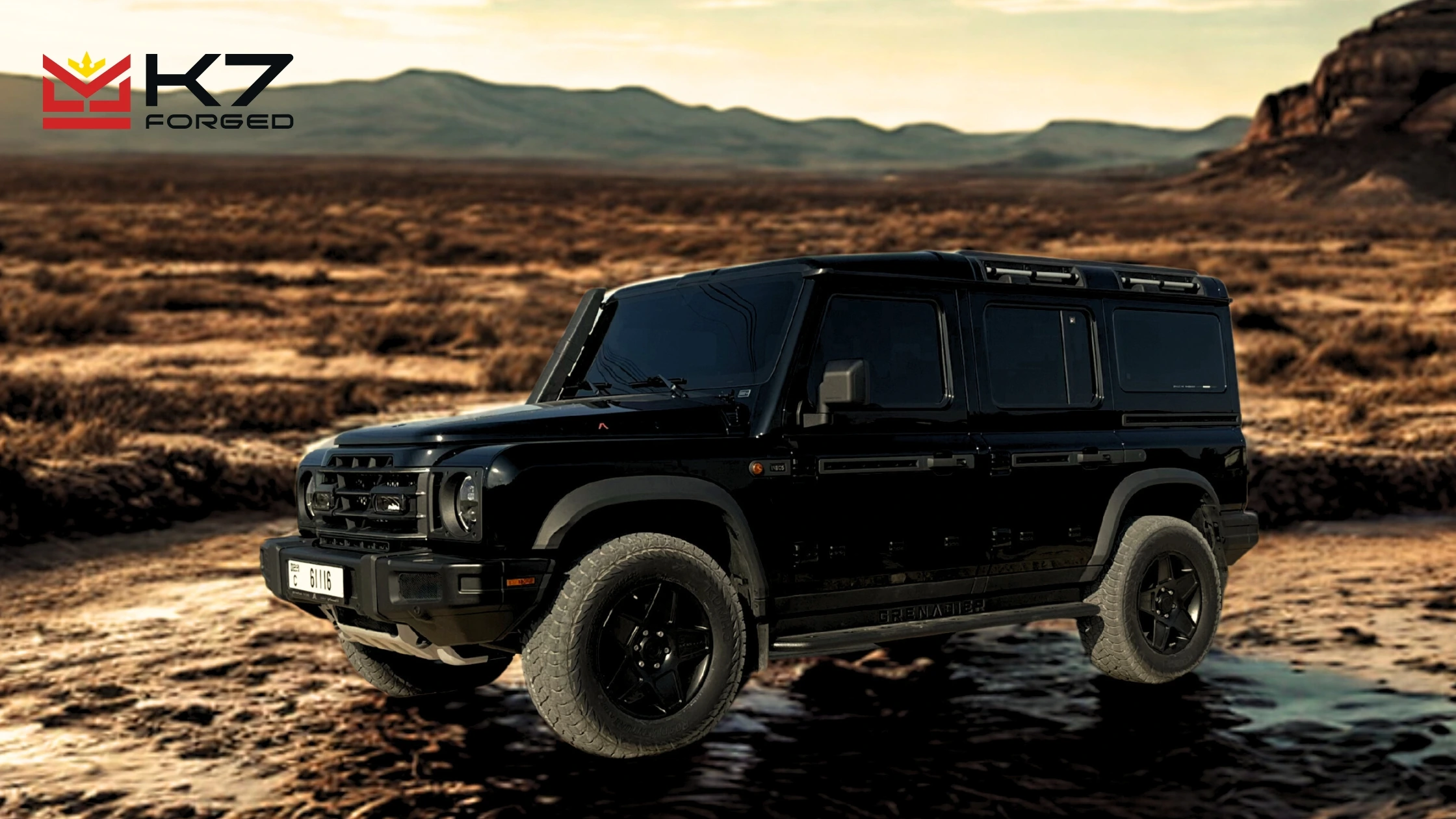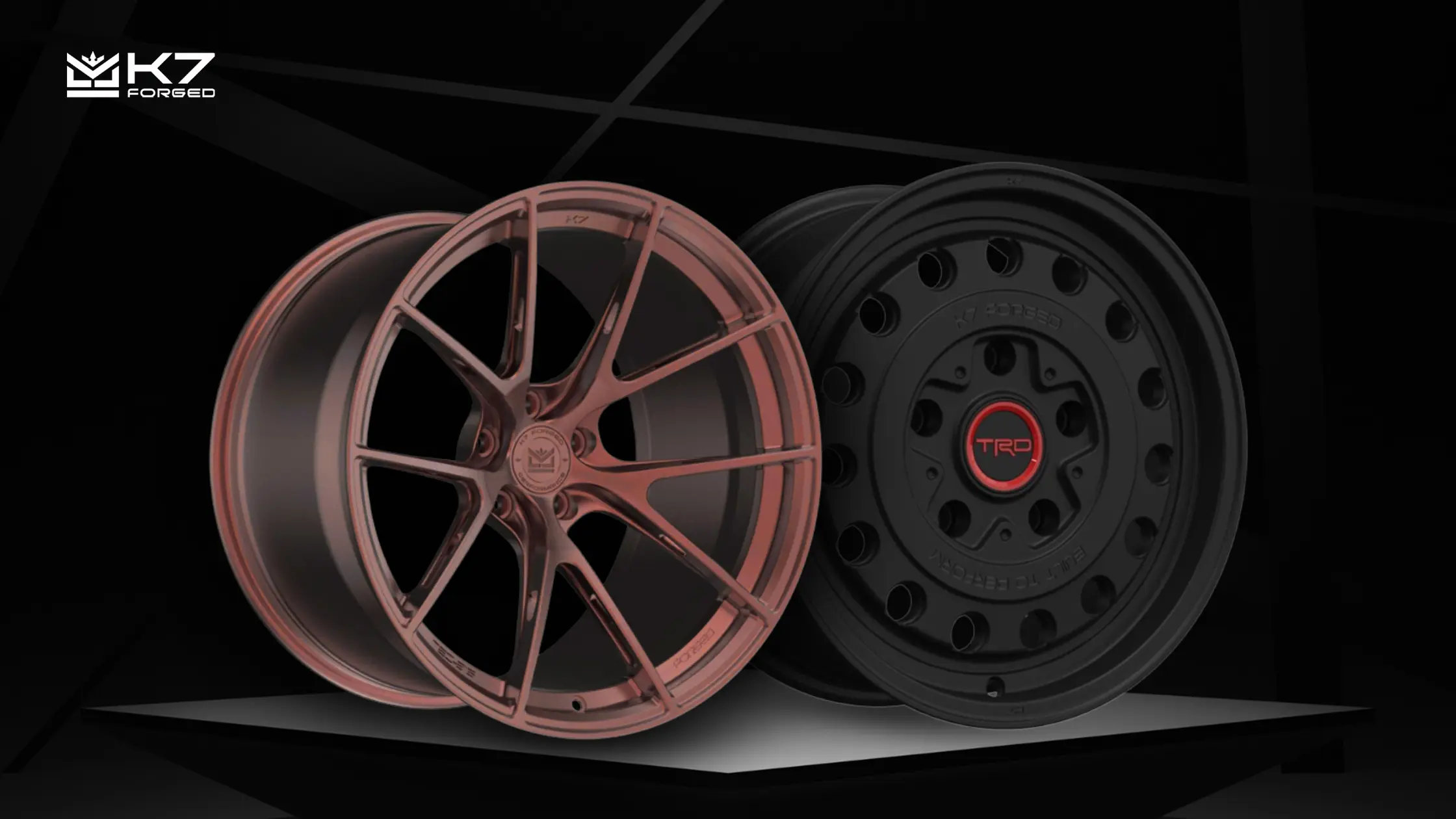If you’re in the market for custom wheels in Dubai, you need to choose the right wheels and tires to get both performance and style. Whether you’re driving through the streets or cruising the open highways, the right setup can transform your driving experience. As a leading custom wheel and rim manufacturer based in Dubai, we’ll tell you everything you need to know before purchasing wheels and tires. We’ll cover the basics of wheel types and materials, explain critical factors like fitment and offset, and highlight the benefits of custom wheels.
Understanding Wheel Types
Depending on the type of wheel you have, your car will have a difference in performance and not just aesthetics.
Stock Wheels
Stock wheels are the basic wheels that come with your car when it leaves the production floor. These are intended for general usage and emphasize cost-effectiveness above performance.
Aftermarket Wheels
Aftermarket wheels are a broad category that includes a variety of alternatives for improving your vehicle’s look and performance. These wheels may replace your factory wheels and provide more design, size, offset, and finish options.
Performance Wheels
Performance wheels are a subset of aftermarket wheels that are specifically developed for certain driving situations and performance objectives.
- Drag Racing Wheels: Prioritize lightweight construction, maximum width, and low offset to include wide, sticky tires.
- Track Racing Wheels: Focus on rigidity, strength, and heat dissipation to handle the demands of high-speed cornering and braking.
- Off-Road Wheels: Built to endure harsh terrain, these wheels feature durable construction, beadlock capabilities, and aggressive offsets.
- Beadlock Wheels: Designed for extreme off-road conditions, beadlock wheels secure the tire bead to the wheel rim with a locking mechanism, preventing tire slippage under extreme pressure.
The Science Behind Wheel Materials
The material used to construct a wheel significantly impacts its performance, weight, durability, and cost. Let’s delve into the two primary materials: forged and cast aluminium.
Forged vs. Cast Aluminum
- Forged Aluminum: This process involves shaping molten aluminium under immense pressure. It results in a wheel with superior strength, durability, and reduced weight.
- Cast Aluminum: This method involves pouring molten aluminium into a mould to create the wheel’s shape. Cast wheels are generally less expensive to produce but often weigh more than their forged counterparts.
Tyre Compatibility
A perfect tire ensures optimal grip, handling, and ride comfort.
Understanding Tire Specifications
To achieve the ideal combination, you need to understand key tire specifications:
- Size: The tire’s dimensions, including width, aspect ratio, and diameter, must be compatible with your wheel’s dimensions.
- Speed Rating: This indicates the maximum speed a tire can safely handle. Choose a speed rating that exceeds your vehicle’s top speed.
- Load Index: This represents the tire’s maximum load-carrying capacity. Ensure it matches or exceeds your vehicle’s weight.
Tire Types for Different Driving Conditions
The type of tire you choose depends on your driving environment and preferences:
- Street tires: Designed for everyday driving, these tires offer a balance of performance, comfort, and durability.
- Performance tires: Engineered for enhanced grip, handling, and responsiveness, these tyres are ideal for spirited driving and track use.
- Off-Road tires: Built for rugged terrain, these tyres feature aggressive tread patterns for traction and durability.
- All-Season Tires: A versatile option that provides adequate performance in various weather conditions.
And you also need to know about your alloy wheels and tire pressure
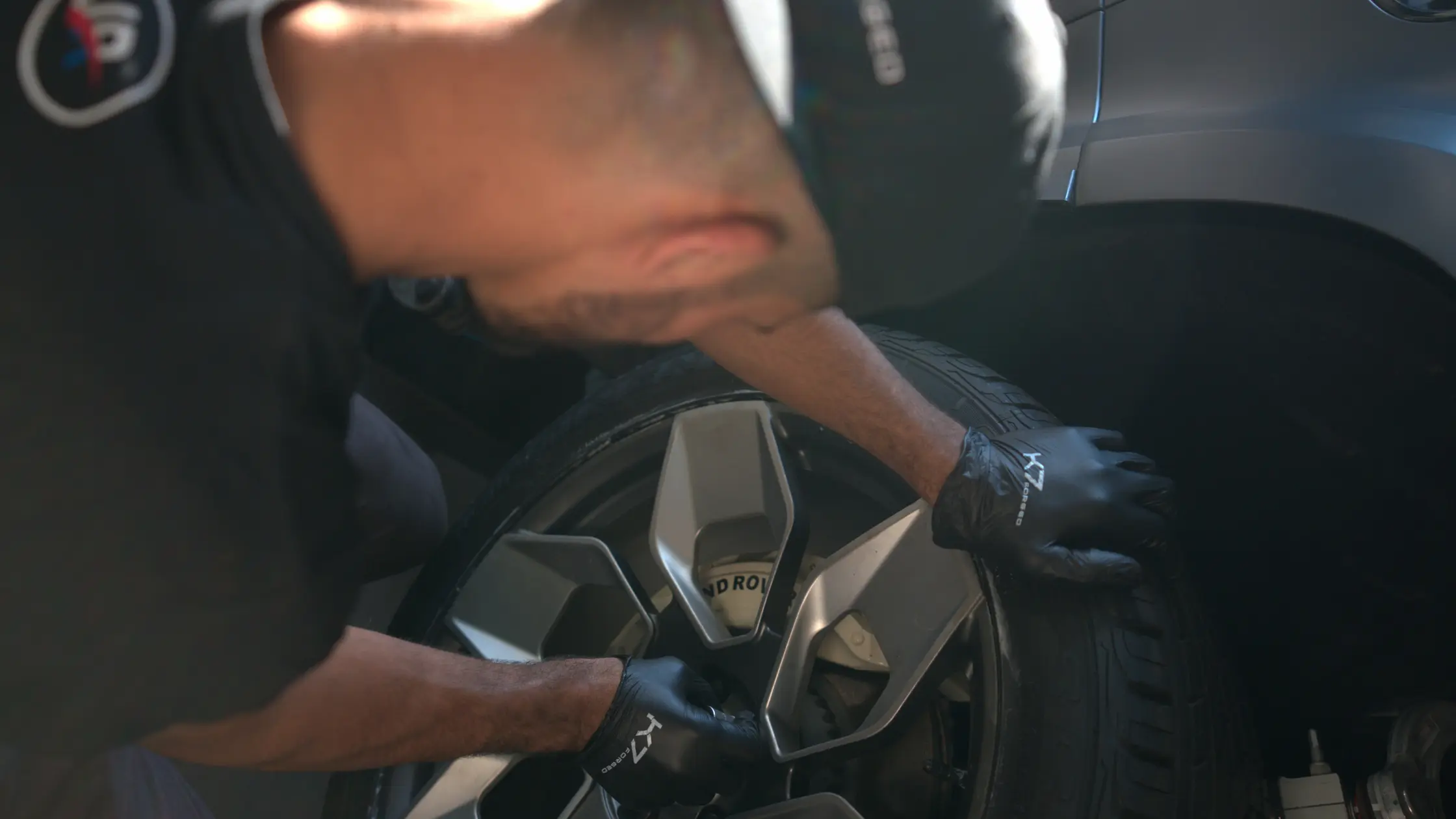
Matching Tires to Your Wheels
Consider the following factors when pairing tires with your wheels:
- Wheel Width: The tire’s width should be compatible with the wheel’s width for optimal performance and appearance.
- Wheel Offset: The wheel’s offset affects tire clearance and can influence tire choice.
- Vehicle Application: The intended use of your vehicle will determine the appropriate tire type and performance characteristics.
Wheel Offset and Backspacing: What You Need to Know
Wheel offset and backspacing measurements determine how the wheel sits in relation to the vehicle’s chassis.
What is Offset and Backspacing?
- Offset: Measured in millimeters, offset is the distance between the centerline of the wheel and the mounting surface.
- Positive Offset: The mounting surface is closer to the wheel face, pushing the wheel inward.
- Negative Offset: The mounting surface is closer to the back of the wheel, pushing the wheel outward.
- Zero Offset: The mounting surface is at the center of the wheel.
- Backspacing: Measured in inches, backspacing is the distance from the mounting surface to the inner lip of the wheel.
Impact on Vehicle Handling and Appearance
- Wheel Fitment: Ensuring the wheel clears brakes, suspension components, and fenders.
- Vehicle Stance: Influencing the car’s appearance, such as aggressive or flush fitment.
- Handling: Affecting camber, toe, and overall vehicle dynamics.
Choosing the Right Offset and Backspacing
- Vehicle Make and Model: Factory specifications provide a starting point.
- Desired Stance: Aggressive, flush, or stock appearance.
- Tire and Wheel Combination: Ensure compatibility and clearance.
- Suspension Modifications: Adjust offset and backspacing accordingly.
Choosing the Right Wheel by Balancing Performance and Aesthetics
Lightweight wheels enhance acceleration, handling, and braking. They must be sturdy and durable to withstand your driving style. Certain designs assist to cool the brakes, which is critical for safety and performance.
Choose a wheel style that complements your car and personal preferences. The size and offset should appear excellent and fit properly. Different treatments, such as glossy or matte, can either compliment or contradict your car’s color.
Consider how you utilize your car, whether for everyday driving, performance, or off-roading. Your personal tastes are important, and seeking assistance from a wheel specialist may help you strike the ideal mix of performance and aesthetics.
Conclusion
Understanding the many types and materials of wheels and tires, selecting the proper size and fitting, and contemplating the benefits of custom wheels are all part of the process. It is also critical to analyze manufacturers based on quality, warranty, and customer feedback, as well as to strike a balance between cost and quality and durability requirements.
Are you ready to update your wheels and tyres? Explore a diverse choice of alternatives from leading wheel rim manufacturers such as K7 Forged.

